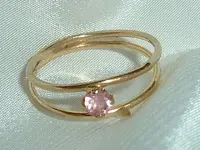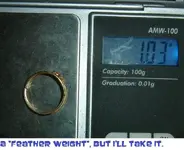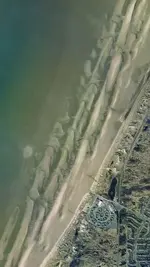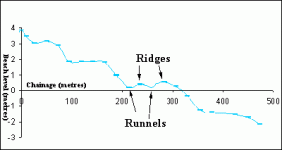lorraine
Silver Member
- Joined
- Dec 15, 2010
- Messages
- 4,470
- Reaction score
- 3,764
- Golden Thread
- 0
- Detector(s) used
- Minelab GT; Sov Elite
- Primary Interest:
- Beach & Shallow Water Hunting
Hi
Beautiful day today! Hank treated me to breakfast this morning so I promised to bring him home some gold while he was glued to the Masters tournament.
Well, I followed the tide out along the wet slope waiting for a runnel to show itself.
About an hour into the hunt here came that runnel , and it proved itself worthy of the GT
Low, solid "buzz" sound at about 6" produced a small gold ring with a pink stone.
Other than the ring, found only a few quarters, a nickel and a couple of pennies.
The ring has no stamping on it, but acid test hit at 14K
Here's some pics
HH
Lorraine




Beautiful day today! Hank treated me to breakfast this morning so I promised to bring him home some gold while he was glued to the Masters tournament.
Well, I followed the tide out along the wet slope waiting for a runnel to show itself.
About an hour into the hunt here came that runnel , and it proved itself worthy of the GT

Low, solid "buzz" sound at about 6" produced a small gold ring with a pink stone.
Other than the ring, found only a few quarters, a nickel and a couple of pennies.
The ring has no stamping on it, but acid test hit at 14K
Here's some pics
HH
Lorraine



Amazon Forum Fav 👍
Upvote
0







